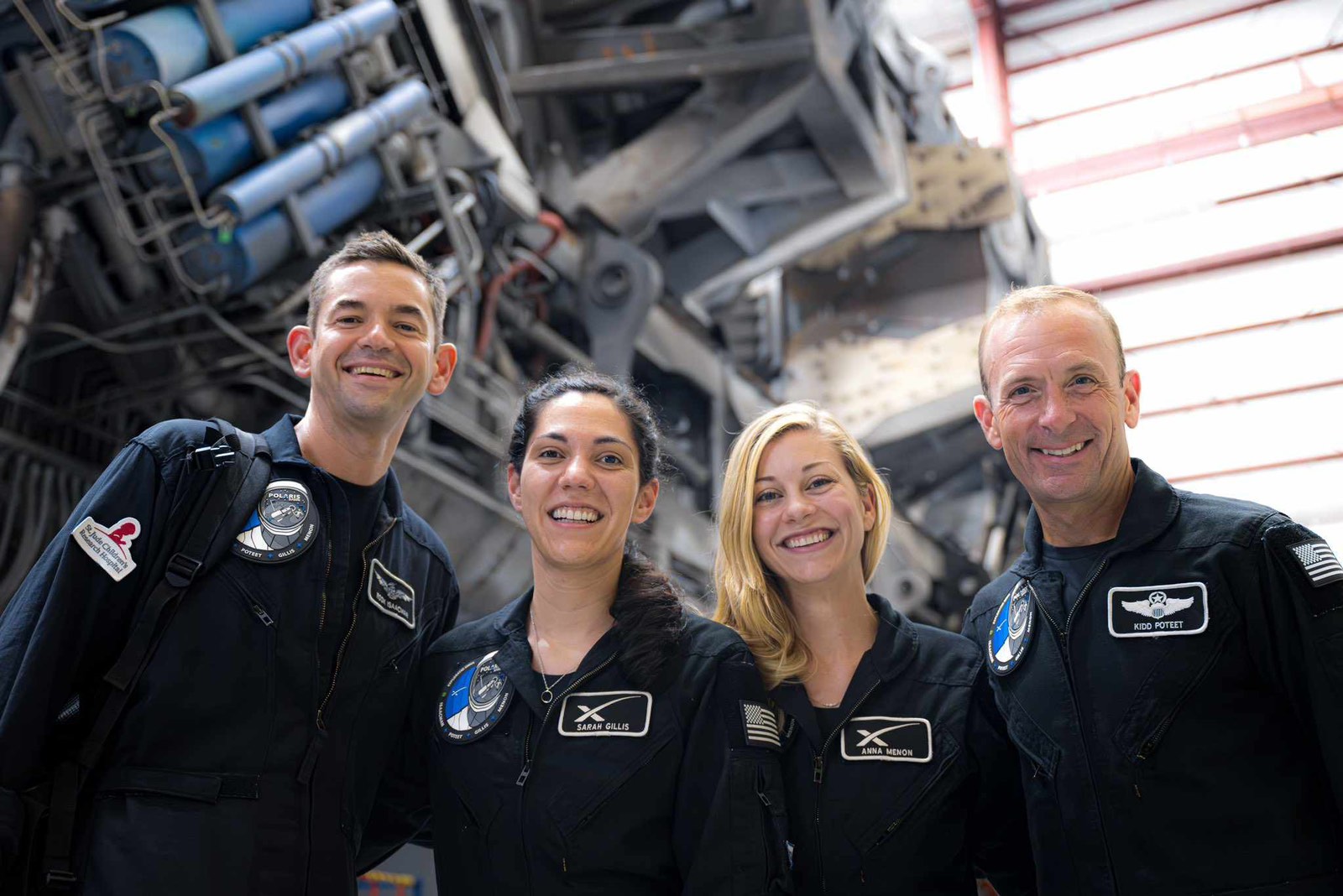SpaceX to Make History with First-Ever Private Spacewalk in Upcoming Polaris Dawn Mission

SHARE
SpaceX is set to push the boundaries of space exploration with its upcoming Polaris Dawn mission, which will include the first private spacewalk conducted by a civilian crew. This ambitious mission is spearheaded by billionaire Jared Isaacman, who made headlines in 2021 with the all-civilian Inspiration4 mission.
Now, as the commander of Polaris Dawn, Isaacman is joined by a highly skilled team comprising retired U.S. Air Force Lieutenant Colonel Scott Poteet, and two SpaceX engineers, Sarah Gillis and Anna Menon. Scheduled for launch from NASA’s Kennedy Space Center, this mission marks a significant milestone in private space exploration.
The Polaris Dawn mission will reach an impressive altitude of approximately 870 miles (1,400 kilometers) above Earth, which is more than double the altitude of the International Space Station (ISS) and the highest altitude achieved by a crewed spacecraft since the Apollo moon missions.
This will place the crew in a region of space that is more exposed to cosmic radiation, offering a unique opportunity to study the effects of high-radiation environments on the human body, a crucial area of research for future deep-space missions to the Moon and Mars.
One of the main highlights of the Polaris Dawn mission is the planned extravehicular activity (EVA), or spacewalk, which will take place on the third day of the mission. This will be the first time that a private, non-government crew conducts a spacewalk, a task traditionally reserved for astronauts from national space agencies like NASA and Roscosmos. During the EVA, the crew members will wear specially designed SpaceX suits that have been upgraded to provide enhanced mobility, protection, and life support systems.
These suits are critical for ensuring the safety of the crew as they navigate the vacuum of space outside their spacecraft, exposed to extreme temperatures and radiation. The astronauts will spend approximately 15 to 20 minutes outside, conducting various tests and gathering data on the suits’ performance, which will be vital for future space missions.
In addition to the spacewalk, the Polaris Dawn mission will carry out nearly 40 scientific experiments. One of the innovative experiments will involve using specially designed contact lenses to monitor the astronauts’ eye health in microgravity.
This research aims to address vision-related issues that have been observed in astronauts during long-duration space missions, providing valuable insights into how to maintain crew health on extended journeys to Mars or other distant destinations.
The mission will also test advanced laser-based communication technologies using SpaceX’s Starlink satellite network, which could pave the way for high-speed, low-latency data transfer between spacecraft and ground stations. These experiments underscore the dual objectives of the Polaris Dawn mission: to advance scientific understanding and technology development, while also setting new precedents for private space travel.
Despite the excitement surrounding the mission, the launch has faced delays due to weather conditions and technical challenges, highlighting the inherent risks and unpredictability of space exploration. Nevertheless, the Polaris Dawn mission stands as a testament to the growing capabilities of private space companies like SpaceX.
By breaking new ground with the first private spacewalk and other pioneering activities, Polaris Dawn represents a significant step forward in the democratization of space travel, potentially opening the door for more private ventures and collaborations in the future.
As SpaceX continues to push the frontiers of space exploration, the lessons learned from the Polaris Dawn mission will be crucial in shaping the future of human spaceflight, laying the groundwork for a new era where space travel is accessible to a broader spectrum of humanity.
*Cover Photo/Thumbnail Photo X @polarisprogram
RELATED ARTICLES

Business is in the Red? Here’s How a Christian Should Respond

Holy Fire Ignites Faith as Thousands Unite in Jerusalem









